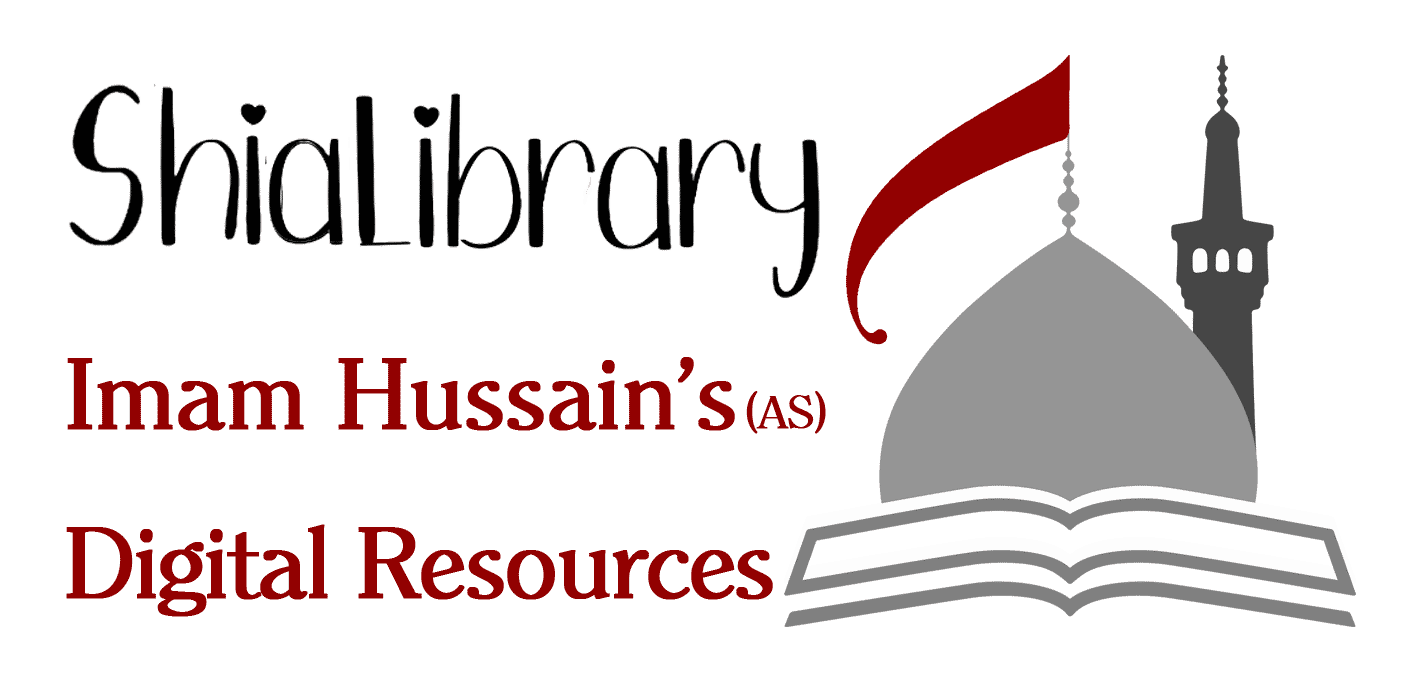The development of the messianic thought by Imam Sadegh
طرح اندیشه مهدویت از سوی امام صادق
نویسنده:
Ghanavi, Amir
غنوی، امیر
چکیده: This paper builds on previous papers and reflects on how the messianic thought is planned and the quality of Mahdavi teachings of Imam Sadegh which has been situated in the religious statements with respect to the overall goals of invitation to Islam, as well as the special opportunities of the truth-seekers in religious education, the needs of the age when the Umayyads were falling from power and Abbasids were rising to power. Surveying the points of emphasis and reflecting on these statements of the Imam can show the wisdom and teachings of the bigger design that one the one hand pursues the general Islamic education goals and on the other hand addresses the specific messianic import of the messages impacting on the ethical and religious education. This research focuses on content analysis of the traditions handed down from Imam Sadiq and attempts to throw some light on its Shiite Mahdavi contents with regards to the proceedings of that age. Thus, it works on the known topics emphasized in the words of Imam along with a sample of each and reflects on the relationship of these words with the audience, trying to gain the wisdom and reason for each issue. The examples the of words of Imam Sadiq in this article are fewer than the previous articles, as we have to narrow the number of traditions because they are numerous and avoid detailed reporting and suffice to general trends. Proceedings of the assumptions and methods are the same as described earlier in the previous papers. The article highlights the point that Mahdavi doctrines taught by the Imam at this juncture of history, not only provides Islamic education and apocalyptic Mahdavism, but also shows the importance of educating which is attentive to the audience. It also highlights the kind of messianic talk sensitive enough to prevent the challenges and deviations in era of the early Imams. این نوشتار، در ادامه مقالات گذشته و تاملی بر چگونگی طرح آموزههای مهدویت از سوی امام صادق? و کیفیت ارایه معارف مهدوی از سوی ایشان است؛ بیاناتی که با توجه به اهداف کلی دعوت دینی، فرصت ویژه صادقین? در آموزش معارف دینی، نیازهای عصر سقوط امویان و ظهور عباسیان مطرح شدهاند. بررسی محورهای مورد تاکید در این بیانات و تامل در نسبت آنها با اهداف کلی و نیازهای هر عصر میتواند از یکسو طرح کلانی را نشان دهد که در این شکل از تعلیم و تربیت تعقیب شده است و از سویدیگر، تاثیر تربیتی و اخلاقی هر یک از آموزههای مهدوی را نمایانتر کند. این پژوهش بر تحلیل محتوایی روایات صادره از امام صادق? تکیه دارد و تلاش میکند با توجه به شرایط عصر صدور، آثار آموزههای مهدوی بر شیعیان را معلوم نماید؛ از اینرو با تعیین محورهای مورد تاکید در سخنان آن امام همراه با ارایه نمونهای از آن و تامل در نسبت این سخنان با شرایط مخاطبان، میکوشد به حکمت و جهت طرح هر یک از آموزهها دست یابد. ارایه نمونه در سخنان امام صادق? در این مقاله با توجه به توضیحات مقالات پیشین محدودتر بوده و کثرت روایات آن حضرت ما را ناچار از گزارش کلیات و پرهیز از ذکر جزییات کرده است. از پیشفرضها و روشهای این مجموعه مقالات پیشتر در نوشتاری گفتوگو کردهایم. این مقاله، روشنگر این سخن است که تعلیم آموزههای مهدوی در این برهه از تاریخ ایمه? افزون بر ارایه معارف مهدوی و آخرالزمانی به نکاتی مهم در تربیت مخاطبان توجه دارد و نوعی زمینهسازی برای جلوگیری از آفاتبحث مهدویت و جلوگیری از انحرافات را متناسب با عصر ایمه نخستین دنبال میکند.

جایگاه موعود گرایی در آیین بودای تبتی و علل گرایش به آن در عصر حاضر
نوع: مقاله
نویسندگان : موحدیان عطار، علی; جعفری، ابوالقاسم
موضوعات : Messianism, Kalki, Mitreya, Tibetan Buddhism, the Dalai Lama, Kalacakra, حکمت الهی, انتظار, تحلیل محتوا, مهدویت, نظام احسن, نظام تربیتی, روایات شیعه, کلکی, میتریه, موعودگرایی, دالایی لاما, افول امویان, عصر امام باقر(, ادعای مهدویت, نظام مهدوی, برنامۀ درسی, چشم دجال, هدفمندی جهان, تمایز ساختی, روابط فراگیر, عقلانیشدن, روایات اهلسنتقاعده قسر, ظهور عباسیانحضرت ولیعصر(, اهداف تربیتیمهدویت, فطرتارتباطات فراملی, کاله چکرهآموزههای مهدویت, کاله چکره, دورۀ متوسطهدجال, آیین بودای تبتی
شبهه ابن حجر درباره سرداب امام زمان (عج) و ردیه های منظوم آن
نوع: مقاله
نویسندگان : رنجبری حیدرباغی، احمد
موضوعات : تفسیر, ابنخلدون, مهدویت, امام مهدی(, انکار مهدویت, ابنحجر هیثمى, الصواعق المحرقة, قصیدۀ سردابیه, قصیدۀ بغدادیه, ردیههای منظوم, سرداب امام زمان(مهدویت, مفسران اهلسنت
اهداف مشترک عاشورای حسینی و قیام مهدوی در روایات
نوع: بحوث و مقالات
نویسندگان : ابراهیم پور, حمزه; قهاری, محمدهادی; موسوی, سید رضا
موضوعات : مهدویت, امام حسین(ع), عاشورا, حدیث, رابطهی عاشورا و مهدویت
| contributor author | Ghanavi, Amir | en |
| contributor author | غنوی، امیر | fa |
| date accessioned | 2025-03-15T09:49:20Z | |
| date available | 2025-03-15T09:49:20Z | |
| identifier uri | http://hdl.handle.net/110/22598 | |
| description abstract | This paper builds on previous papers and reflects on how the messianic thought is planned and the quality of Mahdavi teachings of Imam Sadegh which has been situated in the religious statements with respect to the overall goals of invitation to Islam, as well as the special opportunities of the truth-seekers in religious education, the needs of the age when the Umayyads were falling from power and Abbasids were rising to power. Surveying the points of emphasis and reflecting on these statements of the Imam can show the wisdom and teachings of the bigger design that one the one hand pursues the general Islamic education goals and on the other hand addresses the specific messianic import of the messages impacting on the ethical and religious education. This research focuses on content analysis of the traditions handed down from Imam Sadiq and attempts to throw some light on its Shiite Mahdavi contents with regards to the proceedings of that age. Thus, it works on the known topics emphasized in the words of Imam along with a sample of each and reflects on the relationship of these words with the audience, trying to gain the wisdom and reason for each issue. The examples the of words of Imam Sadiq in this article are fewer than the previous articles, as we have to narrow the number of traditions because they are numerous and avoid detailed reporting and suffice to general trends. Proceedings of the assumptions and methods are the same as described earlier in the previous papers. The article highlights the point that Mahdavi doctrines taught by the Imam at this juncture of history, not only provides Islamic education and apocalyptic Mahdavism, but also shows the importance of educating which is attentive to the audience. It also highlights the kind of messianic talk sensitive enough to prevent the challenges and deviations in era of the early Imams. | en |
| description abstract | این نوشتار، در ادامه مقالات گذشته و تاملی بر چگونگی طرح آموزههای مهدویت از سوی امام صادق? و کیفیت ارایه معارف مهدوی از سوی ایشان است؛ بیاناتی که با توجه به اهداف کلی دعوت دینی، فرصت ویژه صادقین? در آموزش معارف دینی، نیازهای عصر سقوط امویان و ظهور عباسیان مطرح شدهاند. بررسی محورهای مورد تاکید در این بیانات و تامل در نسبت آنها با اهداف کلی و نیازهای هر عصر میتواند از یکسو طرح کلانی را نشان دهد که در این شکل از تعلیم و تربیت تعقیب شده است و از سویدیگر، تاثیر تربیتی و اخلاقی هر یک از آموزههای مهدوی را نمایانتر کند. این پژوهش بر تحلیل محتوایی روایات صادره از امام صادق? تکیه دارد و تلاش میکند با توجه به شرایط عصر صدور، آثار آموزههای مهدوی بر شیعیان را معلوم نماید؛ از اینرو با تعیین محورهای مورد تاکید در سخنان آن امام همراه با ارایه نمونهای از آن و تامل در نسبت این سخنان با شرایط مخاطبان، میکوشد به حکمت و جهت طرح هر یک از آموزهها دست یابد. ارایه نمونه در سخنان امام صادق? در این مقاله با توجه به توضیحات مقالات پیشین محدودتر بوده و کثرت روایات آن حضرت ما را ناچار از گزارش کلیات و پرهیز از ذکر جزییات کرده است. از پیشفرضها و روشهای این مجموعه مقالات پیشتر در نوشتاری گفتوگو کردهایم. این مقاله، روشنگر این سخن است که تعلیم آموزههای مهدوی در این برهه از تاریخ ایمه? افزون بر ارایه معارف مهدوی و آخرالزمانی به نکاتی مهم در تربیت مخاطبان توجه دارد و نوعی زمینهسازی برای جلوگیری از آفاتبحث مهدویت و جلوگیری از انحرافات را متناسب با عصر ایمه نخستین دنبال میکند. | fa |
| language iso | الفارسية | ar |
| language iso | Persian | en_US |
| language iso | فارسی | fa |
| title | The development of the messianic thought by Imam Sadegh | en |
| title | طرح اندیشه مهدویت از سوی امام صادق | fa |
| type | مقاله | |
| type | بحوث و مقالات | ar |
| type | Article | en_US |
| journal title | مشرق موعود | fa |
| source Database | ISC | |
| contenttype | فقط بيانات | ar |
| contenttype | Metadata Only | en_US |
| contenttype | فراداده | fa |
| subject keywords | Messianic teachings | en_US |
| subject keywords | the rise of the Abbasids | en_US |
| subject keywords | Imam Sadiq era | en_US |
| subject keywords | Mahdism claim | en_US |
| subject keywords | the decline of the Umayyad | en_US |
| subject keywords | Abbasid authority | en_US |
| subject keywords | آموزههای مهدویت | fa |
| subject keywords | ادعای مهدویت | fa |
| subject keywords | اقتدار عباسیان | fa |
| subject keywords | زوال امویان | fa |
| subject keywords | ظهور عباسیان | fa |
| subject keywords | عصر امام صادق | fa |
| year publication | 1393 | |
| source Onlinelink | https://search.isc.ac/DL/Lend%20Service/LendService/Get_TitleSearchResultDetail.aspx?DTC=8&DC=671148 | |
| pages | 20 |
مواد ذات صلة
عرض الفایلات ذات الصلة بواسطة: عنوان، المؤلف، المنشئ والموضوع.
-
جایگاه موعود گرایی در آیین بودای تبتی و علل گرایش به آن در عصر حاضر
نوع: مقالهبحوث و مقالاتArticle نویسندگان : موحدیان عطار، علی; جعفری، ابوالقاسمموضوعات : Messianism , Kalki , Mitreya , Tibetan Buddhism , the Dalai Lama , Kalacakra , حکمت الهی , انتظار , تحلیل محتوا , مهدویت , نظام احسن , نظام تربیتی , روایات شیعه , کلکی , میتریه , موعودگرایی , دالایی لاما , افول امویان , عصر امام باقر( , ادعای مهدویت , نظام مهدوی , برنامۀ درسی , چشم دجال , هدفمندی جهان , تمایز ساختی , روابط فراگیر , عقلانیشدن , روایات اهلسنتقاعده قسر , ظهور عباسیانحضرت ولیعصر( , اهداف تربیتیمهدویت , فطرتارتباطات فراملی , کاله چکرهآموزههای مهدویت , کاله چکره , دورۀ متوسطهدجال , آیین بودای تبتی , -
شبهه ابن حجر درباره سرداب امام زمان (عج) و ردیه های منظوم آن
نوع: مقالهبحوث و مقالاتArticle نویسندگان : رنجبری حیدرباغی، احمدموضوعات : تفسیر , ابنخلدون , مهدویت , امام مهدی( , انکار مهدویت , ابنحجر هیثمى , الصواعق المحرقة , قصیدۀ سردابیه , قصیدۀ بغدادیه , ردیههای منظوم , سرداب امام زمان(مهدویت , مفسران اهلسنت , -
اهداف مشترک عاشورای حسینی و قیام مهدوی در روایات
نوع: بحوث و مقالاتArticleمقالهمنبع: پژوهشنامه معارف حسینی::2017::Volume( 02 )::issue: 5::page 91نویسندگان : ابراهیم پور, حمزه; قهاری, محمدهادی; موسوی, سید رضاچکیده: هدف این پژوهش، بیان اهداف مشترک عاشورای حسینی و قیام مهدوی در رهیافت روایی است. مقصود از رابطهی عاشورا و مهدویت، پیوندی است که میان این دو عنصر اساسی در هدف وجود دارد، که با عنصر «غدیر» هویت مکتب امامت را میسازند. روش ...موضوعات : مهدویت , امام حسین(ع) , عاشورا , حدیث , رابطهی عاشورا و مهدویت ,
